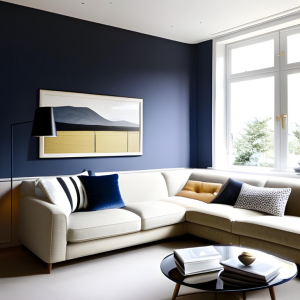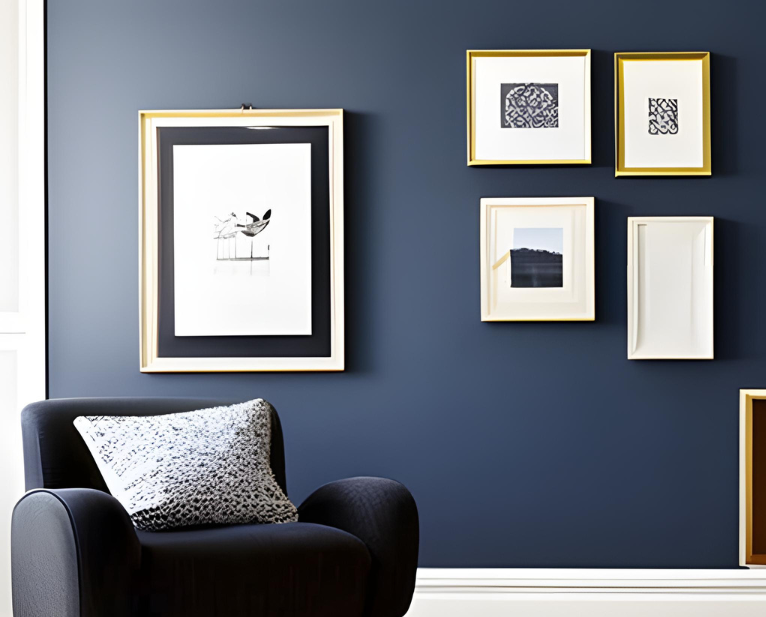Are picture rails a good idea?
Picture rails are a popular interior trim feature associated with vintage design, but nowadays, more homeowners are incorporating them into their modern homes.
These unique elements, typically measuring one-and-a-half to two inches in thickness, wrap around a room at the same height as the top of the window panes or just beneath the ceiling, often below the crown moulding.
When it comes to hanging artwork, many people dislike putting holes in their walls and dealing with the subsequent repairs. Using screws, nails, or hooks is usually the only option, but this can result in damaged drywall, accidents with wires or pipes, and the risk of heavy art pieces falling.
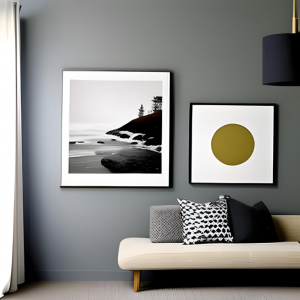
Picture rail moulding offers a convenient alternative. By utilizing the rail, artwork can be hung without the need for screws or nails.
In addition to practical advantages, picture rail moulding provides a unique and captivating feature that adds character to any room. Whether used for displaying art or as a decorative line along the top of a space, it offers an eccentric and intriguing touch.
This flexibility also benefits landlords and art collectors who frequently rearrange or replace their wall art, as it allows for easy repositioning and experimentation.
The Versatility and Charm of Picture Rail Moulding
The ability to freely explore different decor arrangements is a major selling point for picture rail moulding, appealing to both homeowners and those looking to add visual interest. It eliminates the need to visualize placement beforehand, enabling the hanging of decorations and the ability to assess their impact.
Vertical or horizontal orientations, swapping one piece for another, and exploring various configurations become effortless without concerns of damaging the walls.
The vintage aesthetic associated with picture rail moulding evokes a sense of Victorian charm and nostalgia, making it an excellent choice for shabby chic homes, vintage industrial spaces, Victorian-style houses, and any setting that calls for a touch of vintage allure.
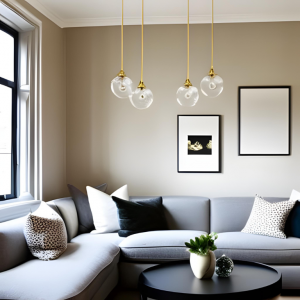
Another practical benefit of picture rail moulding is its assistance in achieving visually pleasing two-tone walls.
Creating a harmonious blend of two colours on a single wall can be challenging, but utilizing the room’s crown moulding, chair line, or picture frame moulding as a definitive break between colours simplifies the process.
Picture moulding acts as a divide, making the transition between tones more visually appealing and seamless.
How Picture Rail Moulding Simplifies Decor Placement
Locating studs in order to hang decorations, art, or other fixtures can be a frustrating task. While commercial stud finders exist, they may not always be readily available.
Alternative methods involve searching for studs near outlets, listening for them by knocking on the wall, or measuring their expected positions based on typical spacing in older or modern homes.
Picture rail moulding eliminates the need for this hassle, as new decorations can be hung directly from the rail, saving time and effort.
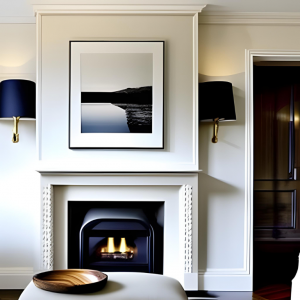
In conclusion, picture rail moulding offers numerous benefits for homeowners seeking a unique and practical interior design feature. It provides a convenient way to hang artwork without the use of screws or nails, adding character to any space.
The flexibility to rearrange and experiment with decor, as well as the assistance it provides in achieving visually pleasing two-tone walls, further contribute to its appeal. Additionally, it saves homeowners from the frustration of locating studs when hanging decorations.
Overall, picture rails are a valuable addition to modern homes, enhancing both aesthetics and functionality.
Are picture rails still in fashion?
The enduring popularity of dado and picture rails is a testament to the lasting trend in interior decorating. Picture rails are horizontal rails positioned near the top of a room, typically at the height of the door frame or just below the ceiling.
Originally designed to protect walls when hanging artwork, picture rails have evolved to serve both practical and aesthetic purposes. They provide an elegant and stylish way to display pictures, and they also add visual interest by breaking up the wall’s colour.
While picture rails have their roots in 18th-century design, they have experienced a resurgence in recent years. Their appeal lies in their ability to enhance a room’s ambiance and offer a versatile canvas for creative expression.
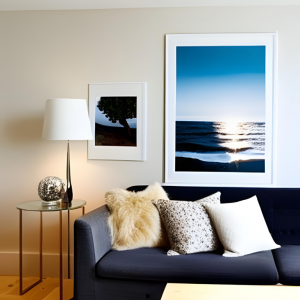
Homeowners today often seek ways to incorporate multiple colours and textures into their spaces, and picture rails facilitate this desire.
By dividing the wall, different colour palettes and textures can be utilized, resulting in a dramatic, sophisticated, or layered look. In addition to their aesthetic benefits, picture rails are highly practical.
They eliminate the need to hammer fixtures directly into the walls, thus preventing damage.
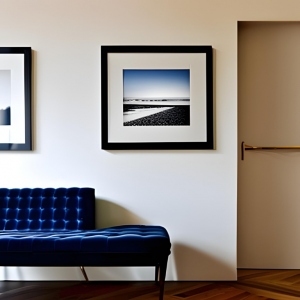
Instead, the picture rail allows for easy adjustment and relocation of artwork, ensuring a fresh and ever-changing interior. This versatility adds to their enduring appeal, as homeowners can effortlessly adapt their decor to suit evolving tastes and preferences.
In conclusion, picture rails continue to be a fashionable choice in interior design. Their ability to enhance the visual appeal of a room, provide a platform for artistic expression, and offer practicality in hanging and rearranging artwork make them a valuable addition to any space.
Whether you embrace a traditional or contemporary style, picture rails offer a timeless and stylish solution for adding character and charm to your home.
Are picture rails Georgian?
During the Georgian era, it was fashionable to divide interior walls into three horizontal parts, mirroring the proportions of a classic column. Traditionally, picture rails were thin wooden moldings positioned below the cornice, serving as a hanging point for pictures.
In conclusion, picture rails have a historical association with the Georgian period when dividing walls into three parts was in vogue.
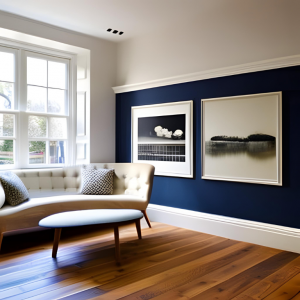
These thin wooden moldings, positioned below the cornice, provided a practical and aesthetically pleasing way to hang pictures.
While the Georgian era popularized picture rails, they continue to be utilized in contemporary interior design, adding a touch of elegance and functionality to walls.
Do picture rails make a room look small?
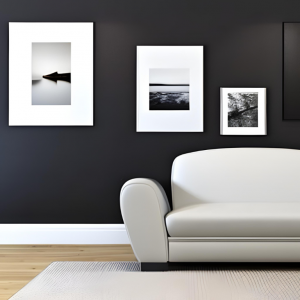
The presence of picture rails can create the illusion of a lower ceiling, depending on the contrast with the wall colour. This, in turn, may make the room feel smaller, as our eyes are naturally drawn to horizontal lines.
However, an alternative option to consider is adding coving, which can project onto the ceiling more, avoiding the potential effect of lowering the walls.
In addition to picture rails, paint colours play a significant role in the perceived size of a room. Opting for colours that reflect ample light or deep hues that add depth to the walls can make a difference.
A lack of contrast in paint colours, such as using the same colour for walls, woodwork, and radiators or a slightly lighter shade, can contribute to creating a sense of spaciousness.
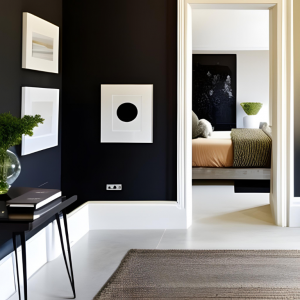
Strategic furniture choices also contribute to the perceived size of a room. Furniture with visible legs, allowing the floor to be seen beneath, can create a sense of openness.
Incorporating elements like a glass table or cane armchair that do not visually fill the space can also help.
Choosing a sofa that doesn’t strongly contrast with the walls, incorporating a large mirror, and hanging curtains high to give the walls a taller appearance are additional techniques that can make a room feel larger.
Ultimately, there are various approaches available to enhance the perception of spaciousness in a room beyond the influence of picture rails alone.
What is the difference between dado and picture rail?
Architrave, dado, and picture rails are commonly found in people’s homes and serve decorative purposes to enhance the appearance of a room. Let’s explore the distinctions between dado and picture rails:
Dado rail is positioned around the lower to middle section of a room, while picture rail runs closer to the top, typically at the height of the door frame. Architrave, on the other hand, is a finishing detail around doors and sometimes windows.
Architraves are instantly recognizable as they form the perimeter around doorways or windows, providing a more appealing look and creating a seamless transition between walls and the door/window area.
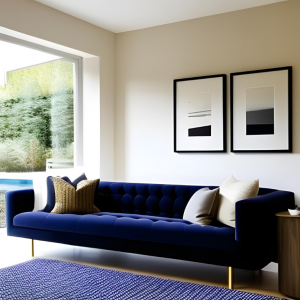
Cutting architraves can be a bit challenging as they require specific shaping and precise mitre joints.
Dado and picture rails, on the contrary, are more of a design choice rather than a necessity. While architraves are commonly found in doorways, the decision to incorporate dado and picture rails is often based on personal preference.
Dado and picture rails play a significant role in room design projects. These elements divide a wall into different sections, allowing for the use of alternative styles or colours. Many people appreciate this idea as it prevents the room from appearing plain or monotonous.
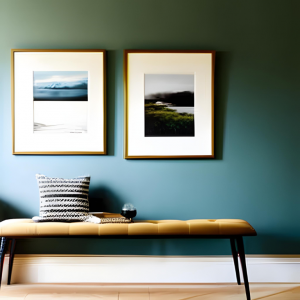
However, some individuals opt to use dado or picture rails without introducing different patterns or colours.
Originally, picture rails were designed to hang pictures and prevent wall damage from nails. Some people continue to use them for this purpose today.
There are no strict rules regarding the height at which dado or picture rails should be installed. However, certain height ranges tend to produce the most aesthetically pleasing results.
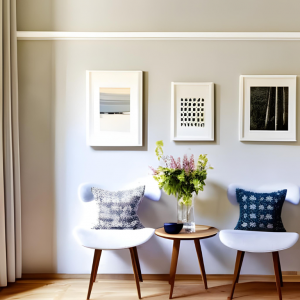
If you are installing them yourself, it is important to consider these ranges to achieve the desired visual effect and enhance the overall look of the room.
In conclusion, dado rails are positioned in the lower to middle section of a room, while picture rails run closer to the top. Both serve as decorative elements that divide the wall into sections, allowing for the incorporation of alternative styles or colours.
Architraves, on the other hand, enhance the appearance of doorways and windows. The choice to include these features in a room is based on personal preference and can greatly enhance the overall aesthetic appeal.
